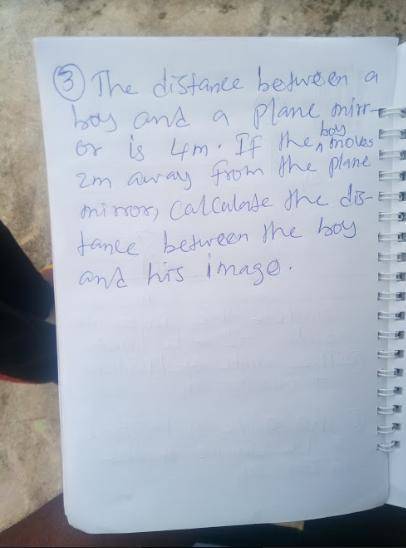
Answers: 1
Another question on Physics

Physics, 21.06.2019 22:30
Fft review: linspace, fs, fftshift, nfft 1. generate one second of a cosine of w,-10hz sampled at f, = 100hz and assign it to x. define a tt as your time axis 2. take 64 points fft. 3. as you remember, the dft (which the fft implements) computes n samples of s2t where k-0,1,2, n -1. plot the magnitude of this 64-points fft at range 0 to 63, what do you think of this graph? 4â·to get the x-axis into a hz-frequency form, plot this 64-points fft between-50 to 50 (the 100hz sampling rate) and have n-points between them. 5. according to your figure, what frequency is this cosine wave at? 6. remember that the fft is evaluating from 0 to 2ď€. we are used to viewing graphs from-ď€ to ď€. therefore, you need to shift your graph. 7. now according to your shifted graph. what frequency is this at? 8. note that the spikes have long drop-offs? try a 1024-point dft. note that the peak is closer to 10 and the drop-off is quicker. although, now sidelobes are an issue
Answers: 2

Physics, 22.06.2019 05:00
Which statements describe the movement of ocean currents around the globe? check all that apply. strong winds force warm water to sink to the ocean floor. the coriolis effect causes warm and cold water to mix. cool dense water sinks to the ocean floor. warm water replaces cool surface water. wind blowing parallel to the shore causes upwelling of cool water.
Answers: 1

Physics, 23.06.2019 08:40
Which of the following is not used to measure wind? oa. psychrometero b. wind socko c. weather vaneo d. anemometer
Answers: 2

Physics, 23.06.2019 15:30
The following statements are about the electroscope. select all that are true. if an electroscope were given a positive charge beforehand, the leaves would move closer together if a positively charged object were brought near. when a properly prepared electroscope is used to determine the type of charge on an object, the total charge on the electroscope changes when the charged object is brought near (but not touching) the electroscope. depending on how the electroscope is prepared beforehand, the leaves can either move together or move apart when negative charge is brought near. an electroscope must first be given a known type of charge before it can be used to identify the types of charges on objects brought near it. when properly prepared, the leaves on an electroscope will always move further apart when negative charge is brought near. the leaves of an electroscope will move apart if it is given either a positive or a negative charge.
Answers: 2
You know the right answer?
Pls help, me, i nees to submit now
...
...
Questions



Mathematics, 16.04.2021 21:50

Mathematics, 16.04.2021 21:50

History, 16.04.2021 21:50


Mathematics, 16.04.2021 21:50

Mathematics, 16.04.2021 21:50

Mathematics, 16.04.2021 21:50



Mathematics, 16.04.2021 21:50



Mathematics, 16.04.2021 21:50



Mathematics, 16.04.2021 21:50

Mathematics, 16.04.2021 21:50

English, 16.04.2021 21:50




